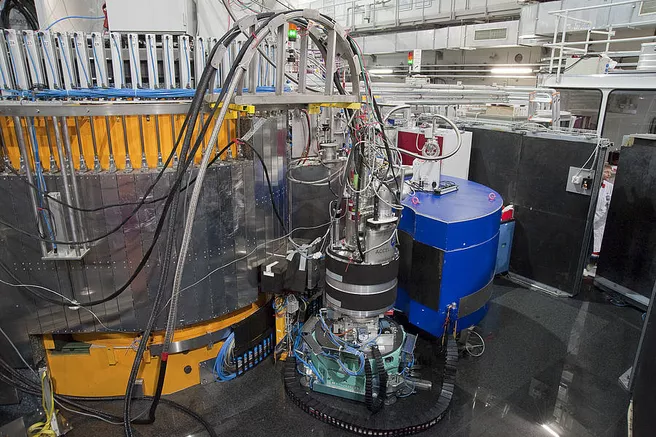Utilising a combination of a 7.5-Tesla magnet, a closed cycle cryostat (CCR) and a dilution insert, temperatures between 100-500mK and magnetic fields up to 2 Tesla were applied. The whole system is cryogen free, i.e. without liquid helium or nitrogen. The CCR and the dilution insert have been developed in house by the FRM II sample environment group (head: Dr. Jürgen Peters).
The local contacts Dr. Klaudia Hradil and Dr. Astrid Schneidewind where impressed by the ease of use and compatability of the components. The 100mm room temperature bore of the magnet allows it to accept the CCR, which first cools the dilution insert to 3.5 K. Within the insert, the sample reaches temperatures down to 100 mK during the scattering experiment. He-cryostats available at FRM II have to be refilled with liquid helium and nitrogen frequently and have a smaller sample space in magnetic fields.
The experiment, performed by Japanese and American scientists, studied phenomena which occur only at lowest temperatures and in applied magnetic fields. The easy operation of the sample environment resulted in the optimum use of the beamtime, allowing the best possible results to be obtained.
